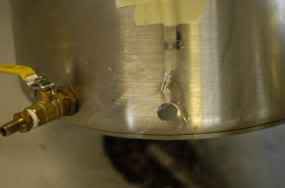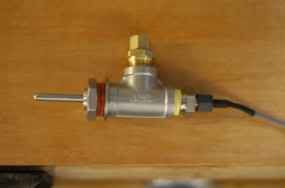 First basement brew took place this week. It was not only the first brew in the basement, it was also the first time I did a 10 gallon boil (actually 13.5). This was all thanks to the 5500W water heating element used in the kettle. The element is not physically mounted to the kettle, but attached to a heatstick so it can be easily removed/cleaned, etc. Here are some things I learned from this whole experience...
First basement brew took place this week. It was not only the first brew in the basement, it was also the first time I did a 10 gallon boil (actually 13.5). This was all thanks to the 5500W water heating element used in the kettle. The element is not physically mounted to the kettle, but attached to a heatstick so it can be easily removed/cleaned, etc. Here are some things I learned from this whole experience...
1. 5500 watts is more than adequate to boil 13.5 gallons of wort.
2. The absorption ratio of grain is a bit more than I had thought... need to calculate this again.
3. My batch sparging method used on a ten gallon batch is stretching the limits of my 48qt mash tun. Actually, the mash tun is too small if I want to single batch sparge. I was able to finish it with a 2 batch sparge. The liquid did go up to the top a couple of times, but it worked out fine in the end.
4. It is easier to hit mash temps with greater volumes of grain and liquid... definitely a big bonus.
5. Moving the tubing around for the march pump is not entertaining. Will need to put the valves into effect to end this nonsense.
6. The SSR was needed for the water heating element. I would have had boilovers if I had not throttled down the element to 70-80% duty cycle sometimes. The frequency I was running the SSR at was 1Hz. This seems ok. The SSR is mounted to an old pentium/CPU heatsink and fan setup. There are no problems dissipating the heat the SSR puts out.
7. A fan running 240CFM will exhaust a 5500W element's boil with a 18" diameter brew kettle. A 240CFM fan is barely adequate though. I would prefer something over 280CFM.


 Yes, the
Yes, the 





